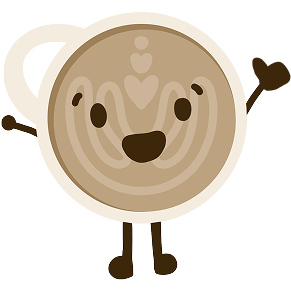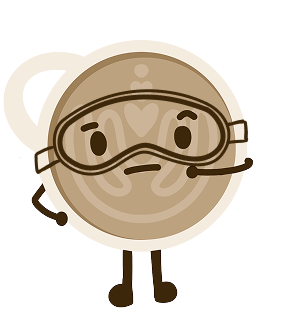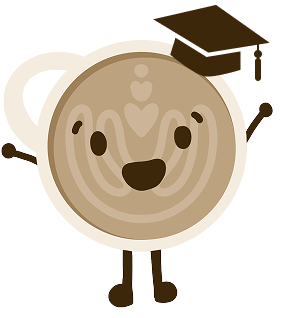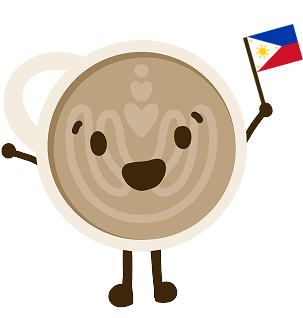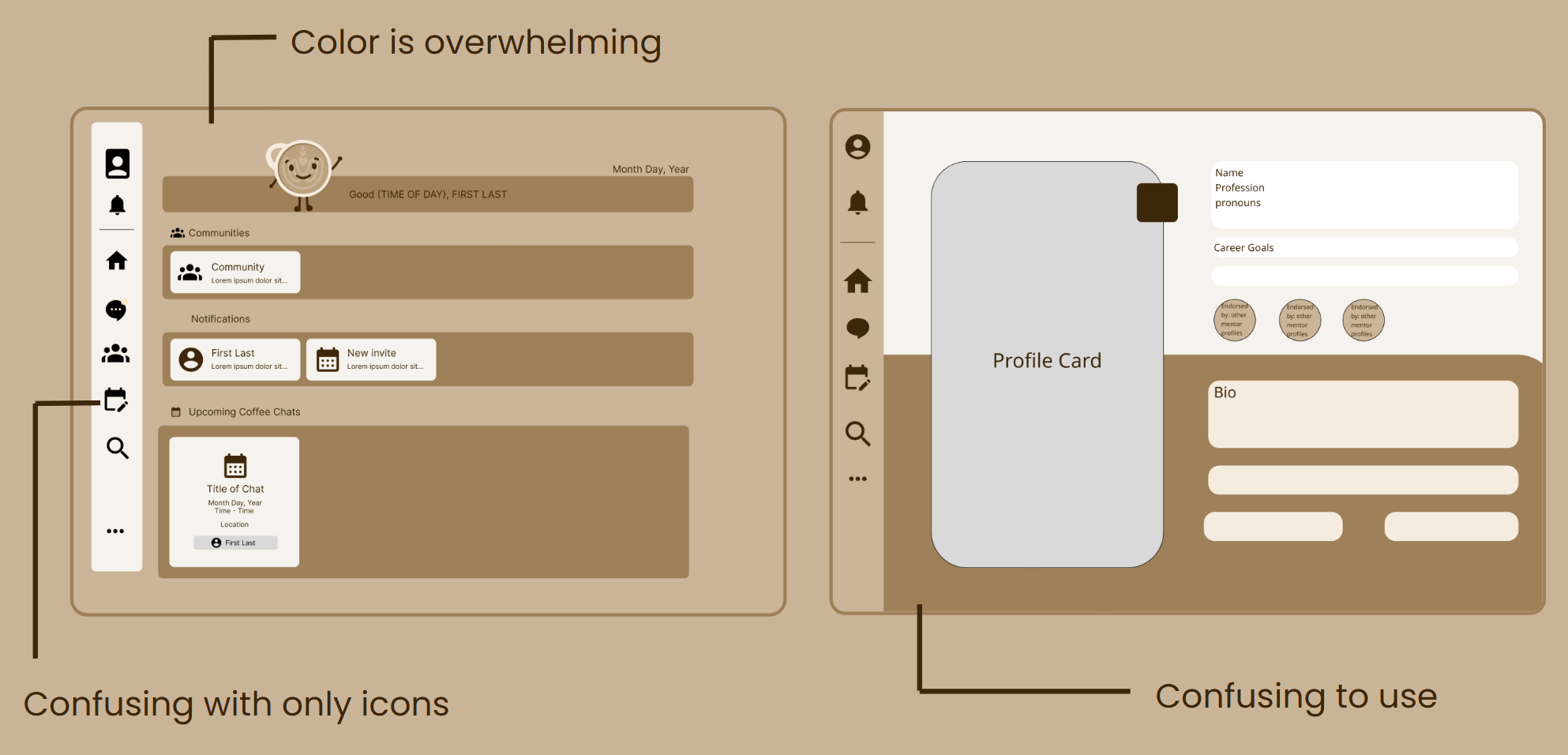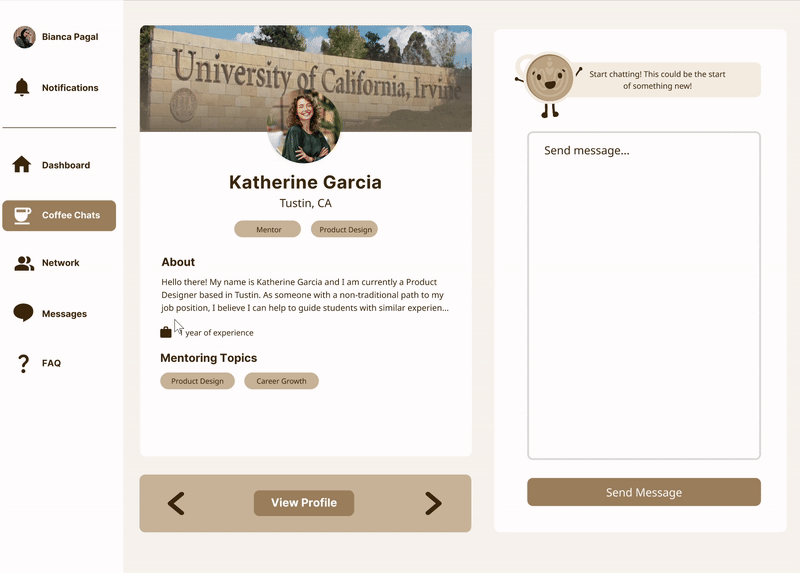DURATION
October 2024 - May 2025
8 months
TOOLS
Notion
Figma
Adobe Suite
TEAM
Ethan Santos
Tawann Alvarez
Sebastian Capuyan
Arlaghn Cayanan
Sherard Dalaguit
Ethan Le
Candice Li
Danielle Ligasan
Ethan Lin
Koston Malayo
Mark Phouiphiphath
Joshua Yalung
Gabriel Zhang
CONTEXT
FUSION is a Filipinx organization at UCI dedicated towards supporting students pursuing STEM related fields. As the Design Lead for the first cohort of FIP (FUSION ICS Project) leaders, I led a design sub-team in building a full-stack application that reflects FUSION’s five core pillars:
Our team identified a common struggle shared by many students—accessing mentorship and professional opportunities—and set out to design a solution. The job market for college students is highly competitive, with key challenges including limited internship and new grad opportunities, delayed responses or being ghosted by recruiters, and difficulty in aligning student skills with employer expectations.
How might we create a centralized, professional, and approachable mentorship platform that allows UCI students to easily discover and connect with mentors, while also making mentorship more accessible, personalized, and ongoing?
RESEARCH
To explore this idea of mentorship, we conducted user surveys, interviews, and constructed a competitive analysis to find out students’ struggles with finding internships and mentors.
KEY INSIGHTS
mentorship is valued, but under-accessed
students desire approachable and relatable mentors
students lack access to meaningful support
These insights shaped our solution: a student-centered mentorship tool that lowers the pressure of starting conversations with mentors—KapeChat.
IDEATION
During our first sprint, we defined the app’s core features and mapped them out using information architectures, user flows, and journey maps.

User Flow for mentor functionality
SKETCHES AND ITERATIONS
Starting with low-fidelity wireframes, we prioritized usability and simplicity. As we entered mid-fidelity, we tested early iterations with users and made changes based on feedback, such as simplifying the scheduling system by moving it into the dashboard and consolidating pages to make the site easier to navigate.
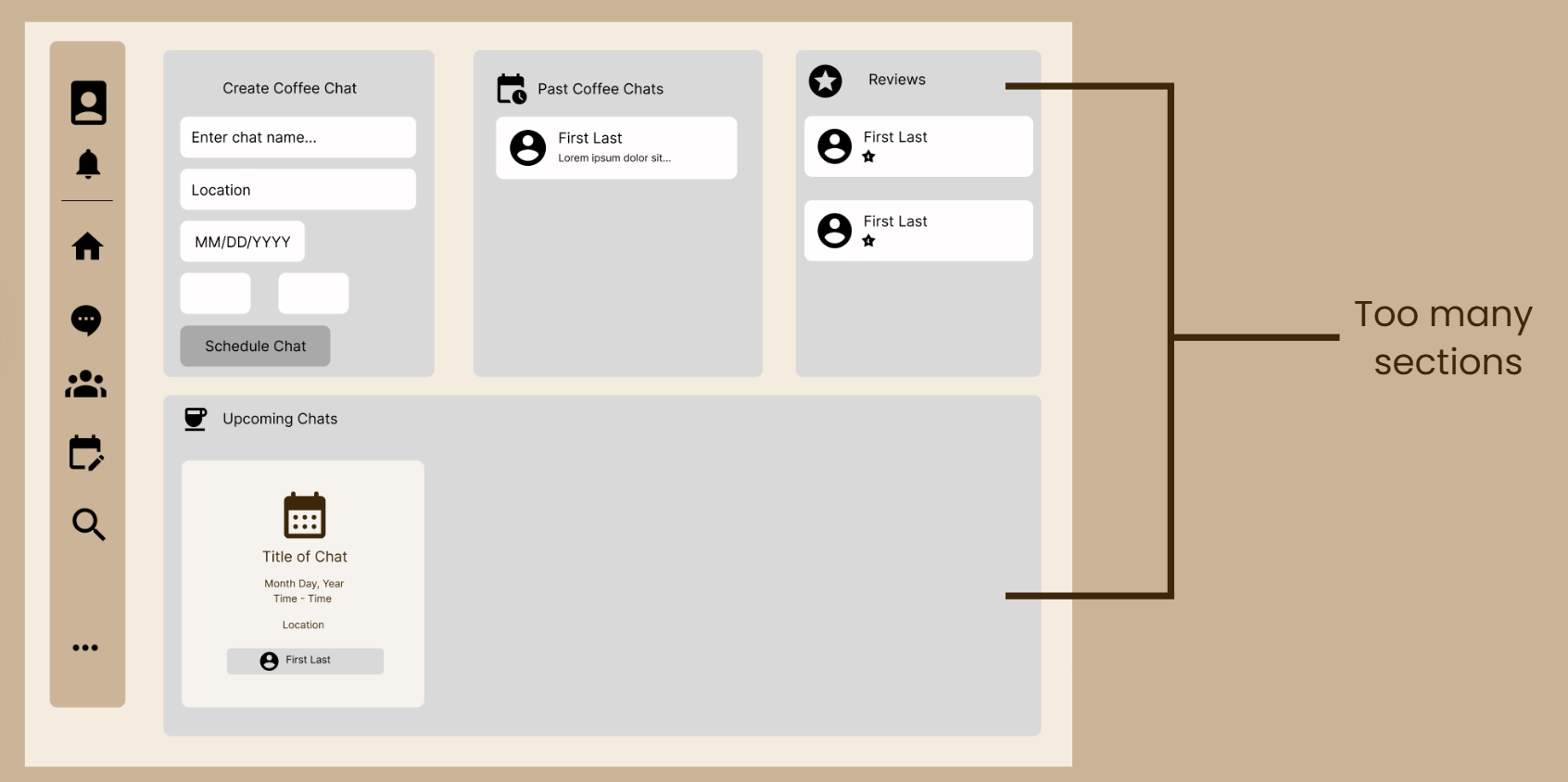
Scheduling System (Before)
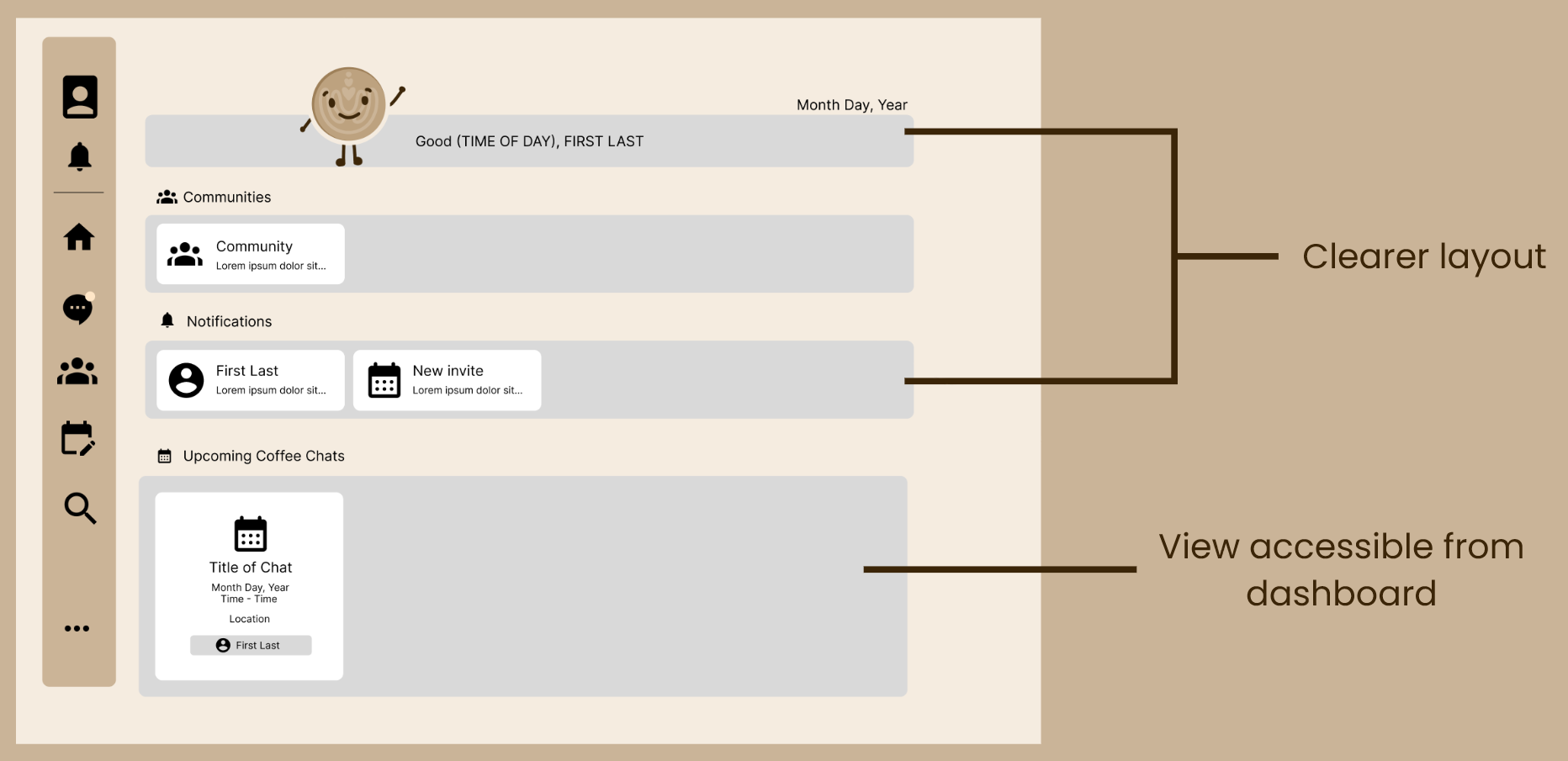
Scheduling System in Dashboard (After)
We transitioned to high-fidelity prototypes using a warm, coffee-inspired branding style—inviting yet professional. We then conducted usability tests to see how our audience would respond to our application.
Our feedback included how our use of color was overwhelming and how the navbar was hard to understand due to the lack of labels. The profile card we designed was also not as intuitive as we thought, as users struggled with understanding how it worked and preferred default profile views. We took all of this into account and iterated to create our prototype of KapeChat!
FEATURES
With our Coffee Chat section, users are able to view profile cards, view their whole profile, and request to message another user. A user’s contact information and resume on their profile is locked until both parties mutually message each other, to maintain security. This gives users the ability to find mentors who can match their needs and capability to contact them for potential coffee chats.
Coffee Chat Functionality
Once users mutually message, they can then schedule coffee events, which are essentially meetings initiated by the app. Users input the event name, recipient, location, date, time, and description. This invite is then sent to the recipient and shows on their dashboard, where they can accept it. Ultimately, this streamlines the idea of planning a day to hold a coffee chat without the need for back-and-forth messaging.
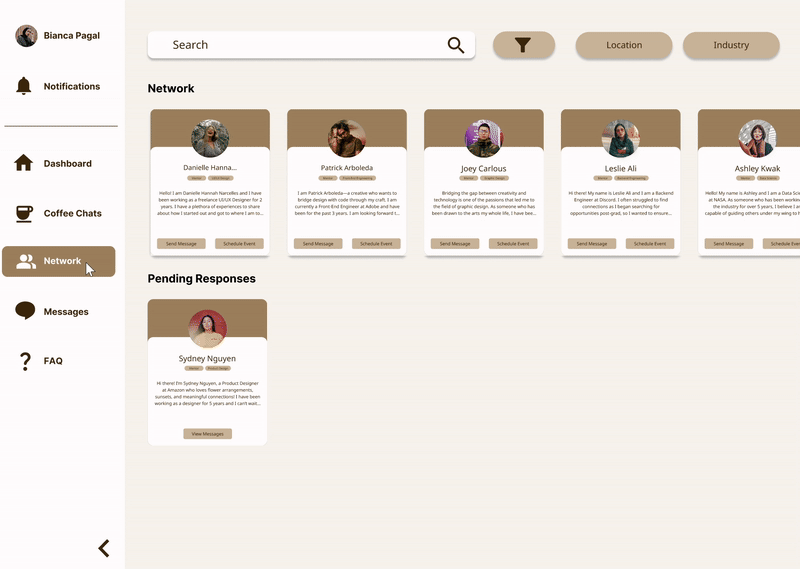
Coffee Event Functionality
We then wrapped up our designs and handed them off to the development team.
REFLECTION
After developing our first full-stack application, our team received the Impact Award—out of 5 teams—for developing a product to spark impact capable of reaching and resonating with others at the very first FUSION Con.
My biggest takeaways came in the form of learning and refining leadership techniques. With this being my first time fully leading a design team, while also being in communication with developers, I learned the importance of staying in constant communication with both leads and the team itself. I also learned to set clear expectations and clarify our scope before each sprint so everyone is on the same page.
I would like to thank my team for all the hard work they put into this project and my Developer Lead, Ethan Santos, for being a great sub-team lead. I would also like to extend a thank you to the FIP Directors for giving me the opportunity to guide a design team and for organizing the program.
.png)
